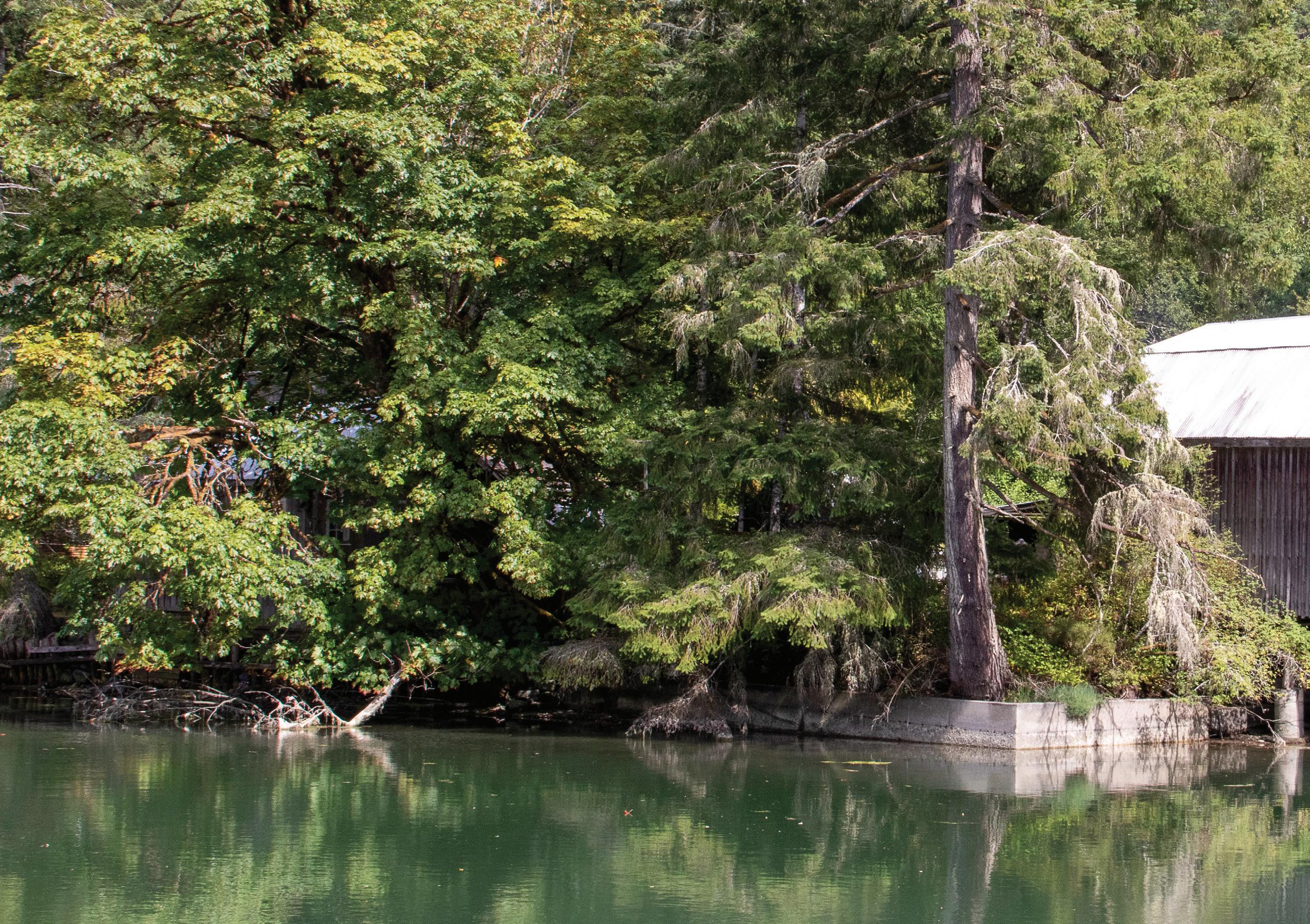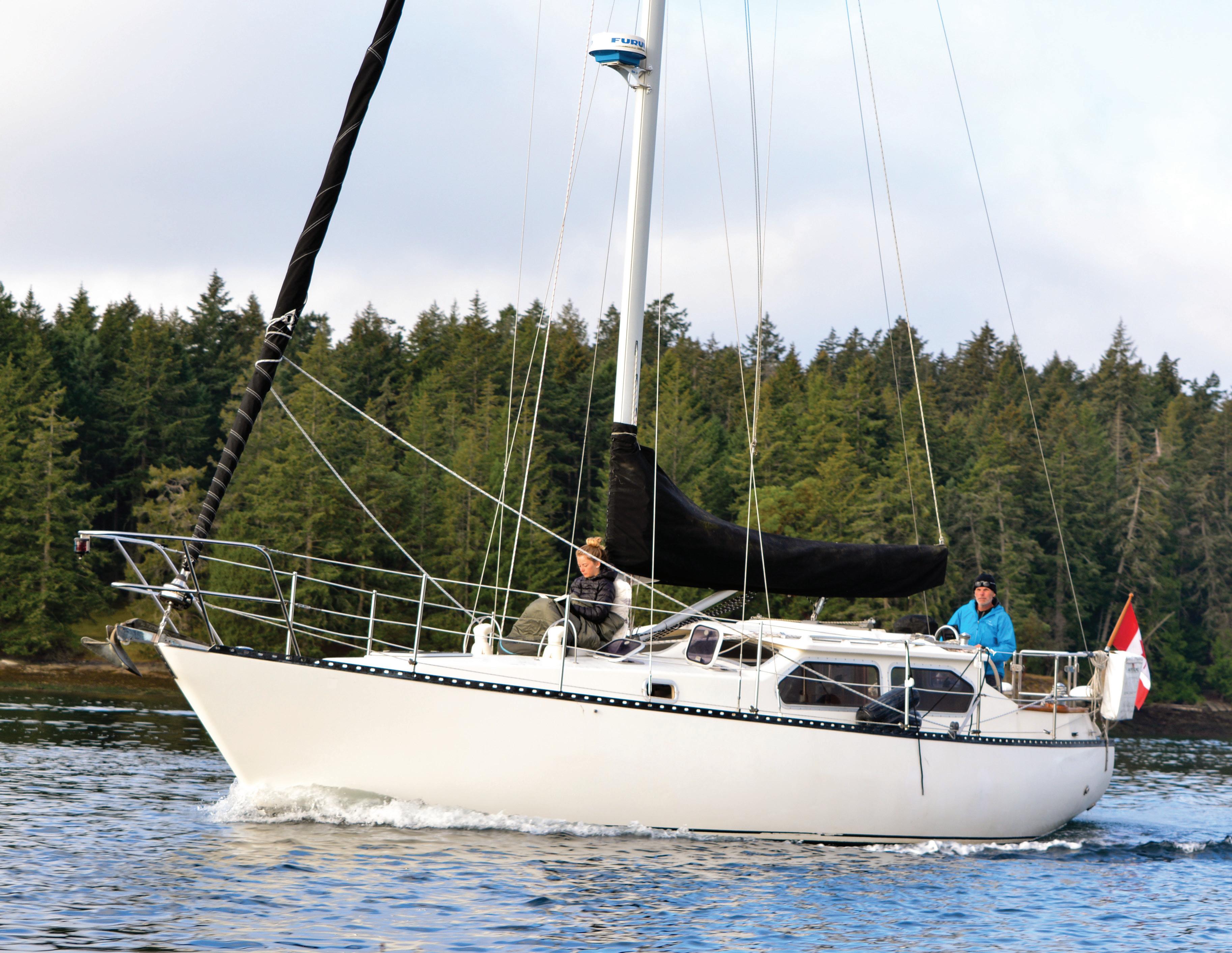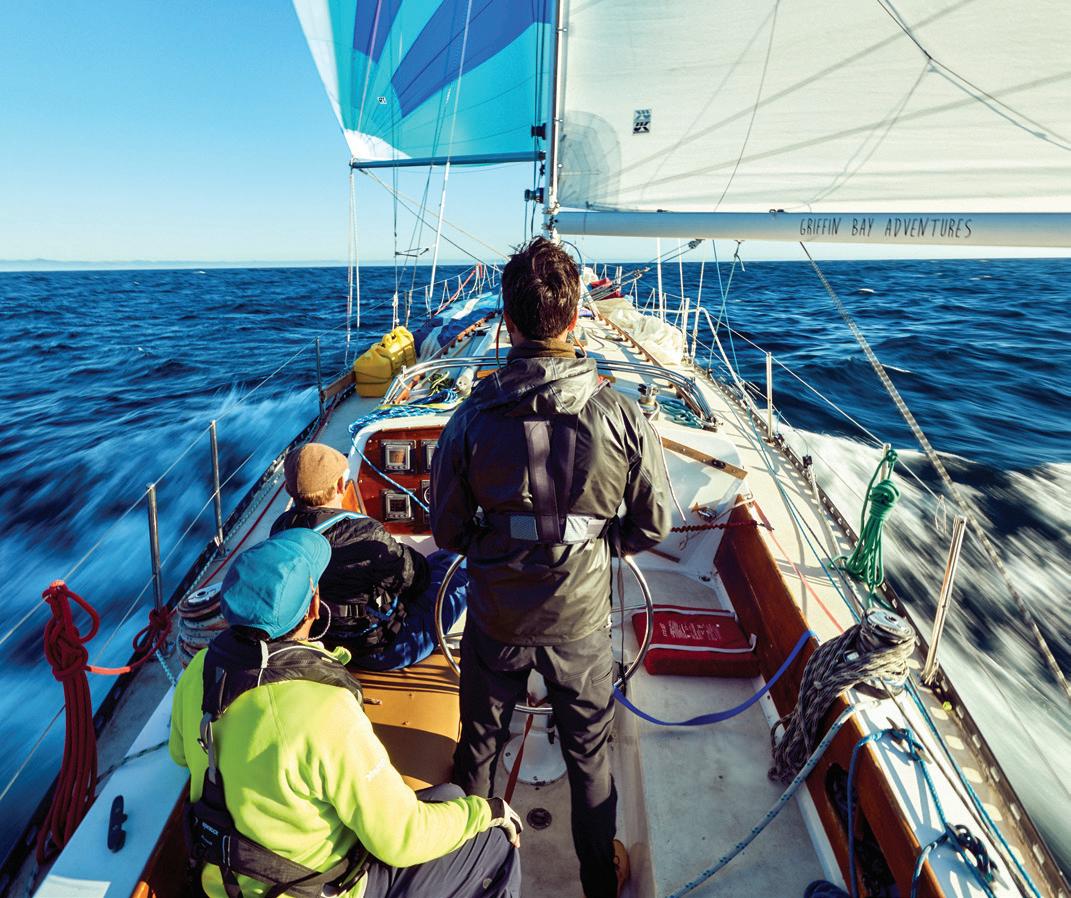
1 minute read
Artist’s View - Secrets of the Salish Sea
by 48° North
Artist's View
Sketches and story by Larry Eifert
A couple months ago, a juvenile humpback whale was found on the beach at Marrowstone Island, probably hit by a freighter. This is sort of a requiem to that whale, but also to pay homage to a species that’s now returning to the Salish Sea after decades of being missing-in-action. After whaling was outlawed in the 1960s, there were only about 1,000 humpbacks left along the entire West Coast. But this massive mammal has made a healthy comeback. Like the gray whale, these animals spend their summers in the north, then migrate south for the winter — and some are now stopping by the Salish Sea to visit us. They are fascinating and smart creatures with complex social lives. They sing memorized songs, and the young quietly whisper these tunes as they’re learning them, possibly to avoid being heard by killer whales. They gather together to fish, blowing bubble clouds from beneath schools of small fish or krill to herd them together like a net — a net of bubbles.
These are big creatures, the size of a school bus and weighing up to 40 tons. That’s as much as 20 cars! It would take a 40-foot boat slip to moor one adult. Their flippers can be 16 feet long, the longest arms of any creature, and their tails can be bigger yet. Interestingly, humpback’s heads are covered with round knobby-like structures, a unique characteristic among whales. Each knob sports at least one stiff hair, which some think might be like a motion sensor, but no one really knows. With gray whales, minke, and orcas also sharing these waters, the best way to identify a humpback isn’t the “hump”, which is not a hump at all but just the way they dive by arching their back, but rather the enormous flipper arm. If you see one of these whales, appreciate it both for its majestic beauty and its amazing comeback from the threat of extinction.





